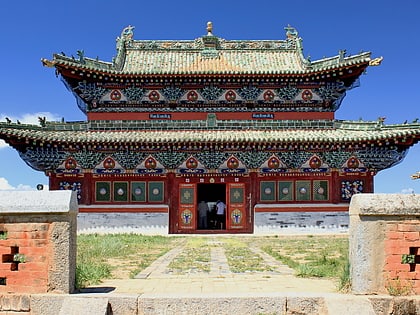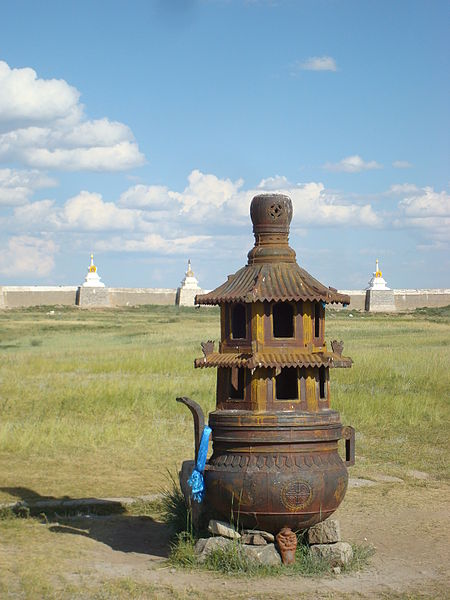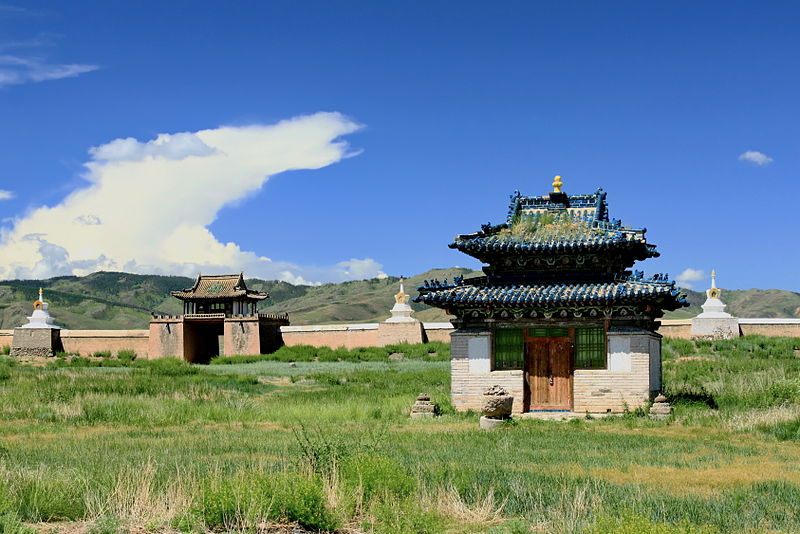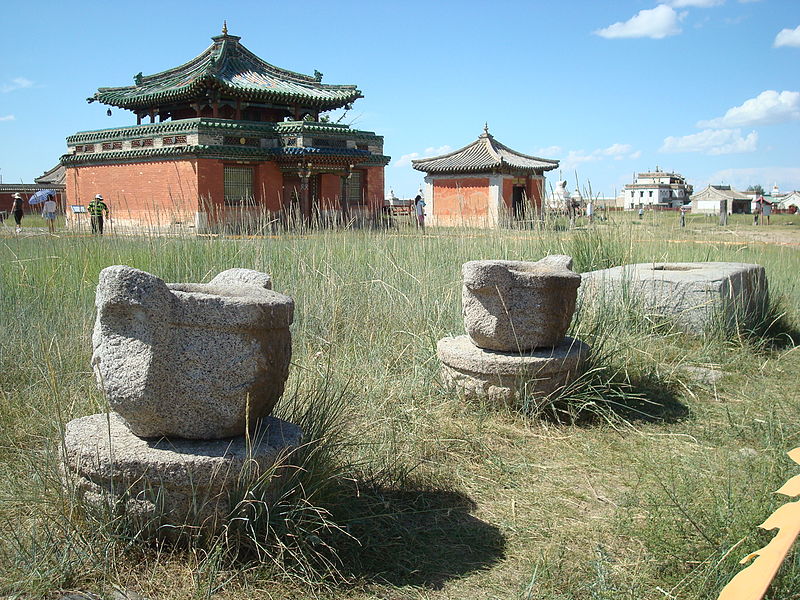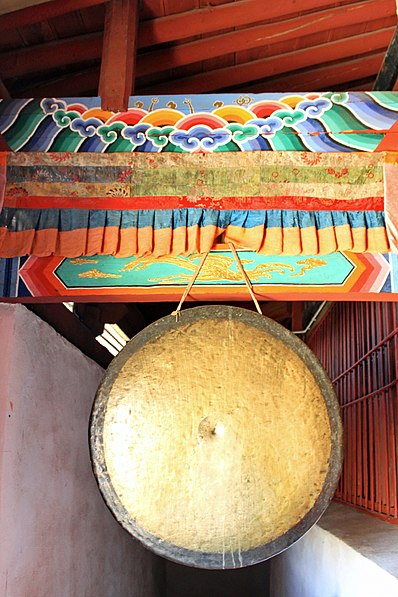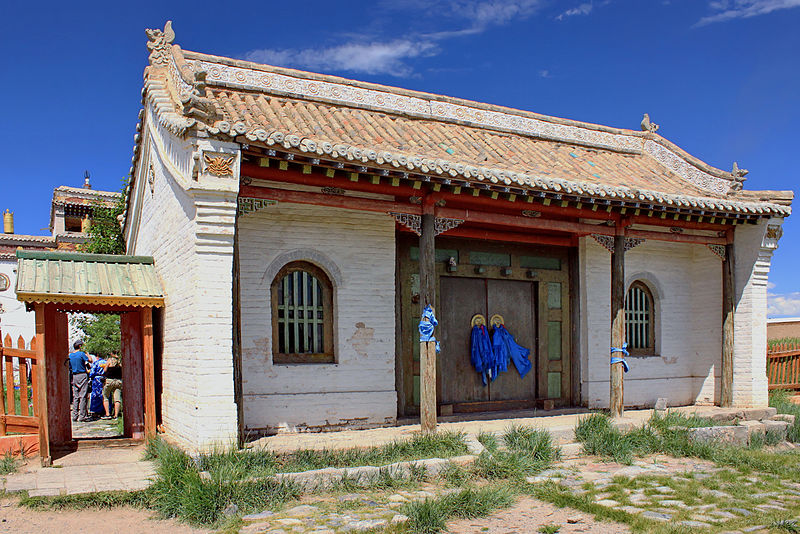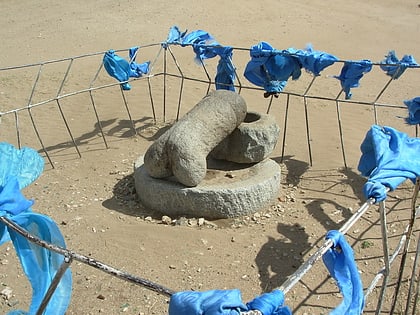Erdene Zuu Monastery, Karakorum
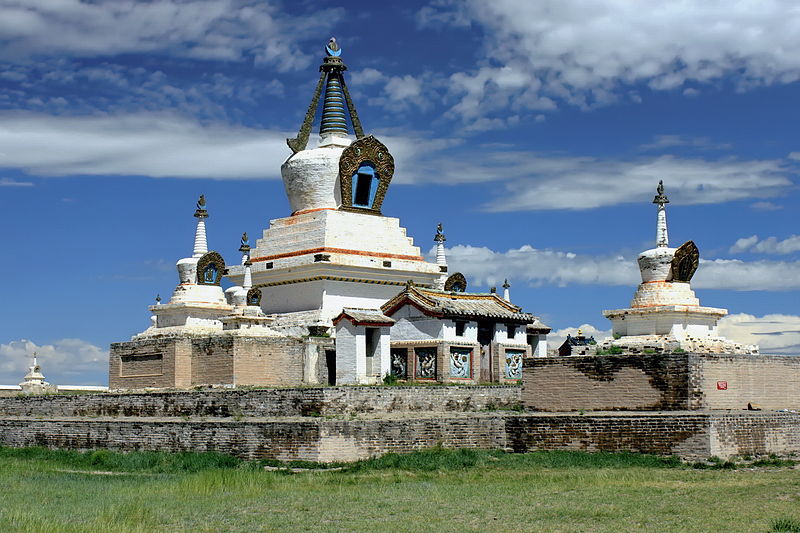
Facts and practical information
Nestled in the vast steppes of Mongolia, the Erdene Zuu Monastery stands as a testament to the country's rich spiritual history. Located in the ancient city of Karakorum, this significant religious site was once the center of Mongolian Buddhism and remains a revered destination for pilgrims and tourists alike.
The monastery was founded in 1585 by Abtai Sain Khan, upon the introduction of Tibetan Buddhism into Mongolia. It is said to have been built from the ruins of the former Mongol capital, Karakorum, which was founded by Genghis Khan in the 13th century and served as a critical hub on the Silk Road.
Erdene Zuu Monastery is characterized by its distinctive architecture, a blend of Mongolian and Tibetan styles. The complex is surrounded by a massive wall, dotted with 108 stupas, a sacred number in Buddhism, symbolizing the elements of the path to enlightenment. Inside the walls, visitors can explore numerous temples, each adorned with intricate carvings, vibrant paintings, and an array of Buddhist iconography.
Despite suffering destruction during the communist purges of the 1930s, Erdene Zuu has survived as an active place of worship. Many of its original artifacts were lost, but the monastery has been partially restored and continues to house a collection of precious religious relics, thangka paintings, and statues.
For the average tourist, a visit to Erdene Zuu Monastery offers a glimpse into Mongolia's spiritual heart. Guided tours provide insight into the history of the site and its significance in Mongolian culture. The monastery also hosts the annual Tsam Festival, featuring mask dances and music performances, which is a captivating event for visitors to witness.
Erdene Zuu Monastery – popular in the area (distance from the attraction)
Nearby attractions include: Kharkhorin Rock.
